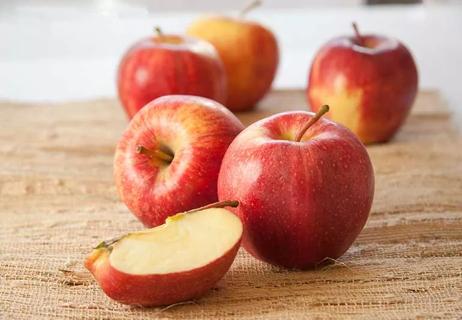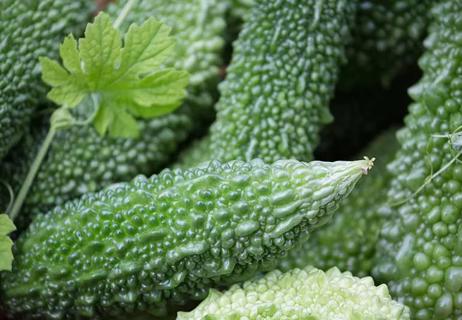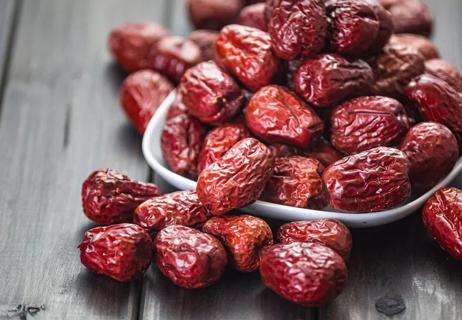Pick red peppers to help fight cancer, memory decline and joint pain

What can you sprinkle on salads or soups, roast on the grill or stuff with cheese and rice? The sweet and versatile red bell pepper is at your service.
Advertisement
Cleveland Clinic is a non-profit academic medical center. Advertising on our site helps support our mission. We do not endorse non-Cleveland Clinic products or services. Policy
No matter how you enjoy it, this pepper delivers an impressive nutrition profile. Registered dietitian Lara Whitson, RD, LD, explains why red bell peppers deserve a place on your plate.
Red bell peppers (also known as capsicum peppers) are a nutrient-dense food, meaning they’re high in vitamins and minerals, contain no unhealthy fats and are low in calories. One cup of chopped red bell pepper has only 46 calories and 3 grams of fiber. In terms of the recommended daily amount of vitamins and minerals, you also get:
The vitamins, minerals and other plant compounds in red bell peppers add up to some substantial health benefits. Research suggests these nutrients can:
Red bell pepper contains beta-cryptoxanthin, a compound that your body turns into vitamin A. Some research suggests foods rich in beta-cryptoxanthin may help lower the risk of bladder, lung and colon cancer.
“Beta-cryptoxanthin is an antioxidant, which protects your cells from changes that can lead to cancer,” says Whitson. “And we know that people who eat a variety of fruits and vegetables have a lower risk of cancer overall.”
Advertisement
Red bell peppers contain anthocyanins — natural compounds responsible for their red color. These pigments, found in many dark red or purple fruits and vegetables, may have a protective effect on brain cells. Research shows that anthocyanins could help slow down memory problems and cognitive impairment as we age.
“Eating a diet rich in anthocyanins is linked to better memory in older adults,” notes Whitson. “There’s no surefire way to avoid cognitive decline, but eating red peppers will give your brain the nutrients it needs to function at its best.”
Cartilage is rubbery tissue that covers the ends of your bones and keeps them from rubbing together. Osteoarthritis (OA), the most common type of arthritis, is a result of inflammation and a breakdown of cartilage.
Many people develop OA from normal wear and tear. But the right nutrients, like some that are in red peppers, could help you get some relief from joint pain.
“Red peppers contain a large amount of vitamin C, which heals and rejuvenates tissues, including cartilage,” Whitson explains. “Research suggests that vitamin C helps reduce pain from knee arthritis. Red peppers also contain anti-inflammatory compounds, which could also help relieve OA symptoms.”
Adults should get 25 grams to 35 grams of fiber each day, but most Americans don’t. A high-fiber diet has many benefits, including making stool softer and easier to pass.
“Red bell peppers have an excellent amount of fiber with few calories, so they’re a great way to up your fiber intake,” notes Whitson. “Fiber helps prevent digestive problems like constipation, and it may even help prevent colon cancer.”
Bell peppers are technically a fruit — a berry, to be specific — but you don’t usually see them on the dessert menu. Red bell peppers are the sweetest bell peppers because they stay on the vine the longest. Green bell peppers are unripe bell peppers and have a more bitter taste, while yellow and orange are usually halfway between red and green.
Many people associate the word “pepper” with spicy, but bell peppers don’t have that kick. “Bell peppers are the only pepper that contains no capsaicin, which is the ingredient that makes foods spicy,” says Whitson.
Its mildly sweet, veggie-like flavor works well in:
Advertisement
Need some more inspiration? Try one of these flavorful, healthy recipes:
Although red bell peppers have some nutrients specific to their red color, all bell peppers are good for you. So, there’s no need to feel like you’re missing out if you prefer yellow, orange or green ones instead. “Eating different colored fruits and vegetables each day is the best way to get the vitamins and minerals you need,” encourages Whitson. “If red peppers aren’t your thing, try something else red — like chili peppers, red cabbage or beets. Then, add other colors, like leafy greens or sweet potatoes. If your plate is full of color, you’re on the right track.”
Advertisement
Learn more about our editorial process.
Advertisement

They’re great for your gut, heart and blood sugar and may lower inflammation

This glorious green superfood is full of vitamins, minerals and lots of other good stuff

An apple a day may reduce high blood pressure, lower cholesterol and help you live longer

From managing blood sugar to lowering cholesterol, this fruit is a jack-of-all-trades

A mango a day may help keep hunger and bloating away

From improving gut health to helping with childbirth, dates are a nutritional powerhouse

Jujube is nutritionally dense, but research is limited

Warning: A popular TikTok hack to extend the life of avocados could lead to food poisoning

Type 2 diabetes isn’t inevitable with these dietary changes

Applying a hot or cold compress can help with pain